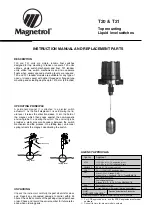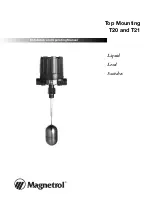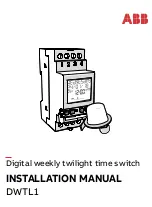
39
CHAPTER 6: SCSI Technical Information
6.1.5 C
OMMON
P
ROBLEMS
The majority of problems encountered with SCSI-bus installations are due to
unbalanced or improper impedances on the SCSI-bus transmission cables caused
by varying manufacturers’ peripheral devices. SCSI terminators compensate for
these inherent impedance mismatches on a SCSI bus where peripheral devices
such as hard drives, CD-ROM drives, scanners, or printers are used.
6.1.6 P
ASSIVE
T
ERMINATORS
The most basic is a passive-resistance style terminator. This is usually supplied with
peripherals and frequently does a poor job of balancing the impedance of the
SCSI bus. Passive terminators are resistor networks that allow signal voltages to vary
with the load and terminator power supplied, resulting in unstable signals from
end to end on the bus and causing data errors. Passive terminators are no longer
recommended by ANSI for designs.
6.1.7 A
CTIVE
T
ERMINATORS
Active terminators add a voltage regulator to the circuit to regulate signal voltages
with varying loads and terminator power, allowing a consistent signal to be
transmitted everywhere on the bus. This in turn compensates for the varying bus
lengths and signal loads. All lines are terminated through 110-ohm resistors, which
are applicable to all narrow and wide single-ended applications. Active termination
is the minimum ANSI-recommended termination.
6.2 SCSI Installation Tips
•
Keep your SCSI chain short.
Official SCSI specifications limit the length of a SCSI
chain to no more that 6 m (20 ft.) for single-ended or 25 m (82 ft.) for
differential. Practical experience says the shorter, the better. The maximum
length you should allow between devices is 3 ft. (0.9 m).
•
Never assign the same SCSI ID number to two devices residing on the same bus.
SCSI
uses these numbers as addresses to ensure that information goes to the correct
location. Giving two devices the same address can result in lost information.
•
Know that some SCSI-ID numbers may be reassigned.
Internal boot hard drives are
usually set to ID “0” while secondary hard drives are set to “1”. Motherboards
or host adapters are generally set to ID “7”.
•
Always terminate the first and last devices on the chain.
Drives purchased specifically
for internal use nearly always arrive with terminators installed. If in doubt, call
the vendor you purchased the device from.














































